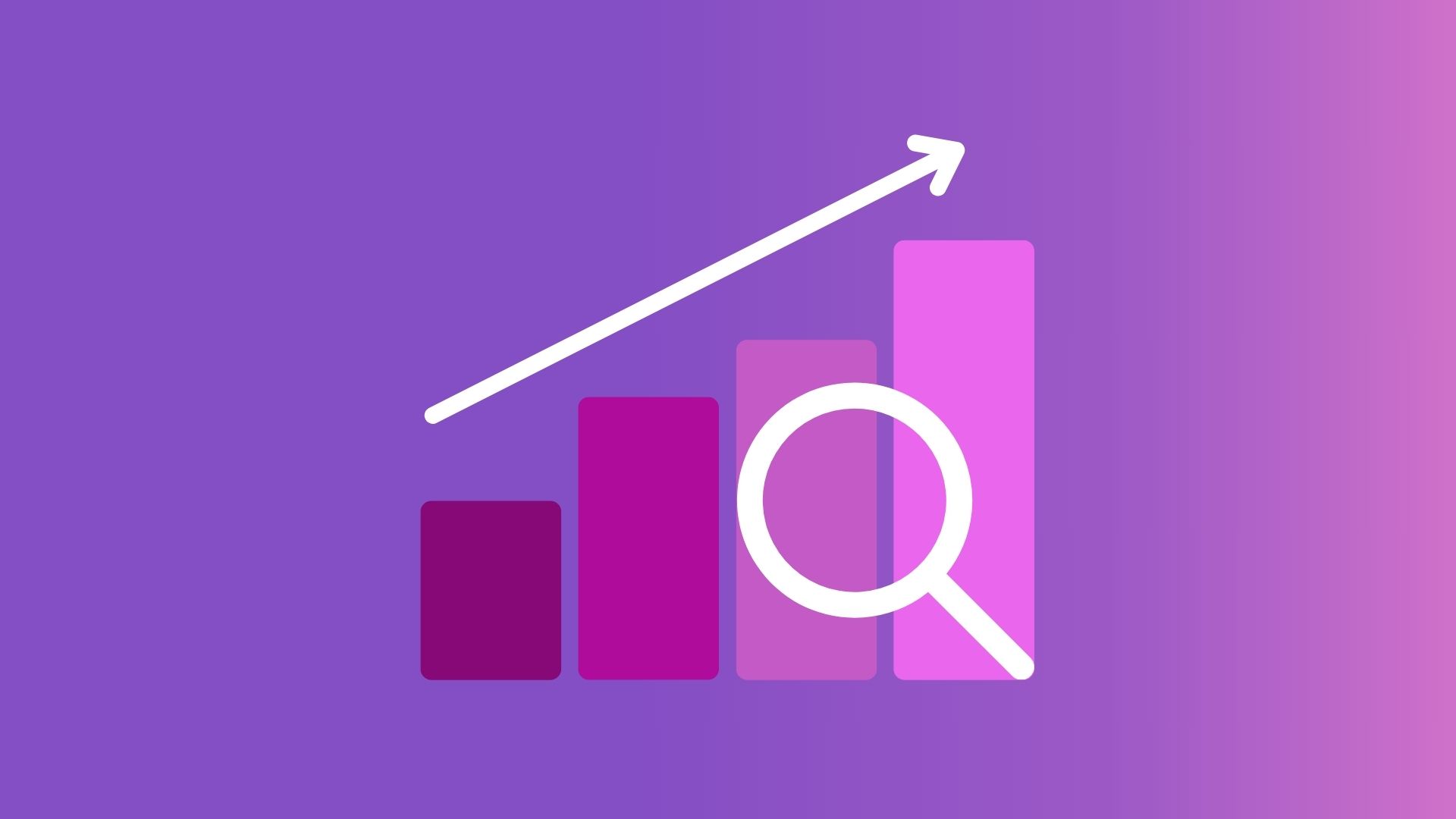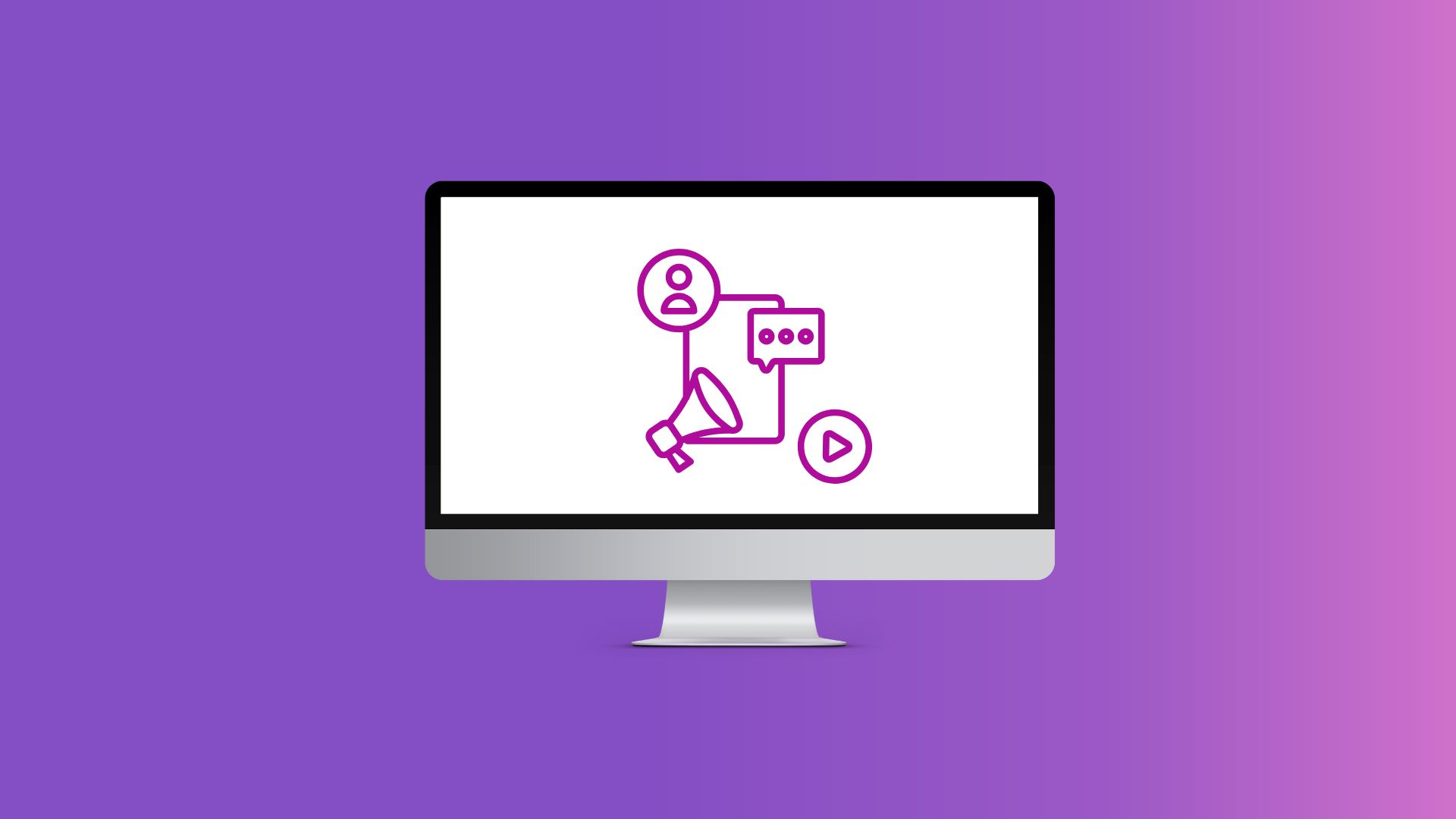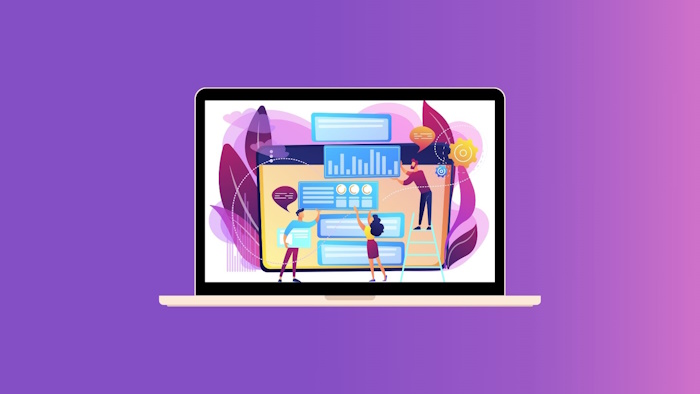SaaS Marketing Metrics You Need to Track in 2025

The Importance of SaaS Marketing Metrics
Funneling your energy into specific SaaS marketing metrics is more efficient and result-oriented. Time is of the essence in this industry, especially now that we see more aspiring SaaS players trying their hand in the market.
Moreover, you can’t exhaust your resources on things that you should not prioritize. You can experiment more if you’re already a large SaaS company, but for small to medium-sized organizations, focusing on SaaS marketing metrics is the better path to take.
Having said that, the key SaaS marketing metrics you need to monitor should be customer-driven. Continue reading below to know more.
SaaS Marketing Metrics You Need To Track
As we just mentioned above, your SaaS marketing metrics should be driven by your niche customer base. After all, your revenue depends on the number of customers who sign up and renew their accounts on your platform.
From that standpoint, here are the most important SaaS marketing metrics that you need to track, especially in today’s changing, innovation-oriented SaaS market.
1. Customer Acquisition Cost (CAC)
2. Customer Lifetime Value (CLV)
3. Churn Rate and Customer Retention
4. Conversion Rates and Funnel Analysis
5. Monthly Recurring Revenue (MRR) and Average Revenue Per User (ARPU)
6. Return on Investment (ROI) for Marketing Campaigns
7. Customer Acquisition and Conversion Time
8. Website Traffic and Source Analysis
9. Social Media Engagement and Brand Awareness
10. Unique Visitors
For more details on monitoring each of these B2B SaaS marketing metrics, refer to the following sections.

1. Customer Acquisition Cost (CAC)
SaaS companies exert tremendous efforts in acquiring as many customers as they can. But in that statement lies an often-overlooked question: how many customers can a particular SaaS company manage to acquire?
You have to know that acquiring and onboarding customers will always come at a cost. Staying on top of your customer acquisition costs is one of the essentials in managing an efficient and finely tuned SaaS company.
In a nutshell, CAC includes all the expenses and resources you shelled out in bringing in a new customer, starting with your first contact with them. As you might know by now, the sales cycle in SaaS is typically longer than other products. HubSpot says that the average SaaS sales cycle takes 84 days, which spans almost three months.
In those nearly three months of the sales cycle, how much did you spend on advertising your SaaS product? To calculate your CAC, you should investigate these expenses:
- Total marketing and promotional campaign expenses
- Salaries of salespeople associated with the acquisition
- License or subscription fees for any software used in the marketing process
- Consultation fees and outsourcing expenses
Once you add up those expenses related to the acquisition, you can now divide the total expenses by the total customer acquired. The result would be your CAC.
Of course, you should also investigate Customer Lifetime Value (CLV), which refers to the revenue that a single customer can generate for the entirety of their subscription or license. Overall, your average CLV should be higher in value when compared to your CAC.
If you want to lower your CAC without compromising product quality, here are several tips:
- Re-engage with existing customers and seek feedback
- Create a referral program
- Exercise consistency in building a relevant community
- Optimize your SEO (Search Engine Optimization) strategy

2. Customer Lifetime Value (CLV)
CLV is one of the key SaaS marketing metrics because a larger CLV means more resources to cover your CAC or other sales-related expenses.
From a SaaS standpoint, how does CLV accelerate your growth? With most SaaS companies now taking on the subscription-based business model, the focus is not just on reeling in new customers. The key to getting better CLV is successfully encouraging existing customers to renew their subscriptions, preventing them from transferring to another SaaS platform.
Having said that, it’s recommended that you calculate your CLV from time to time. To do this, you need to consider these components:
- APV (Average Purchase Value)
- APFR (Average Purchase Frequency Rate)
- CV (Customer Value)
- ACL (Average Customer Lifespan)
To determine your APV, you need to divide your total revenue by the number of successful orders. For APFR, divide your the number of purchases by the number of your customers. Now that you have your APV and APFR, you should multiply them to come up with your CV.
The next step is to determine your ACL, which you can achieve by dividing the sum of customer lifespans by the number of customers. Finally, divide your CV by your ACL to come up with your SaaS product’s CLV.
The takeaway is you need to improve your CLV, and here are several recommendations for you to achieve that:
- Provide a dynamic, always-available customer support
- Offer technical support on different platforms
- Build and nurture a community of diverse audiences
- Offer timely upgrades and rewards for your existing customers
- Allow existing customers to benefit from a referral program
- Factor in customer feedback in developing your product
- Make the onboarding process smooth and easy
3. Churn Rate and Customer Retention
Speaking of CLV, your churn rate and customer retention are parallel to it. As a SaaS company, one of your main priorities is to retain customers and encourage them to renew their subscriptions. For this reason, churn rate and customer retention are two of the most crucial SaaS marketing metrics.
An easy way to describe churn rate is that it refers to the number or percentage of customers that leave your platform during a specified period. A high churn rate means that there’s something wrong with the direction you’re heading in, whether that is in terms of product development, customer support, or branding marketing.
So, a SaaS company needs to decrease its churn rate to collect more revenue. In the SaaS space, the average churn rate is between 10-14% per year. However, this depends on the size of your company. A small SaaS business should only have up to a 5% churn rate per month, while larger and more established SaaS companies should have less than 1% churn rate monthly.
The thing is your churn rate says a lot about your SaaS product or service. Here are several common reasons why you have a high churn rate:
- Stagnant product development
- Inadequate customer service and technical support
- Poor balance between pricing and product value
- Inability to keep up with competitors
Having said that, your customer retention rate should be at least 90%. The key for SaaS companies is to keep their customers happy and engaged. You should foster a community where customers can offer feedback and suggestions for improvement.
Along with customer support and community, here are other tips to increase your SaaS customer retention rate:
- Launch a referral program
- Offer a rewards program for existing customers
- Re-engage with customers and ask for feedback

4. Conversion Rates and Funnel Analysis
As we have repeatedly mentioned in this SaaS B2B marketing metrics list, conversion is the goal for SaaS marketers. It’s not just a one-off thing though; you should know that a SaaS product goes through conversion rates at different levels. What do we mean by that?
Typically, a SaaS sales funnel is composed of four levels, as you can see below:
- Awareness
- Engagement or Interest
- Exploration or Desire
- Conversion
Today’s SaaS sales funnel might include re-engagement, especially with more brands taking on the subscription-based business model. The important thing is you should put utmost value on each stage of the marketing funnel, and not look too far ahead. For example, pouring adequate energy on the Awareness stage will help you determine a niche audience that you could focus on when you climb to the Engagement level.
So, the question now is how will you conduct a SaaS funnel analysis? For you to do that, here are several KPIs (Key Performance Indicators) that you should monitor, particularly in the user journey:
- Website visits and reach
- User behavior on your SaaS website
- Email marketing reach and engagement
- Social media interaction
- Engagement in search engine results
Of course, the endpoint for any SaaS marketing journey is to convert potential customers into actual ones. For SaaS products and services, a good conversion rate should be at least 15%. Increasing your conversion rate could be a trial-and-error process, especially for small and emerging SaaS companies.
Speaking of trial-and-error, SaaS companies now do A/B testing to determine how they should position in the market. An A/B testing in the SaaS space means that you put up multiple iterations of your product or marketing campaign to see which one is more effective and efficient. This could help you know more about your target customer base, which could then improve your conversation rates.
5. Monthly Recurring Revenue (MRR) and Average Revenue Per User (ARPU)
When tracking key SaaS marketing metrics, two of the fundamental elements you need to monitor are your MRR and ARPU. As their name suggests, MRR is a predictive metric that estimates how much you can earn in a month, while ARPU is the profit or revenue you get per user or account.
As we said earlier, most SaaS companies don’t rely on one-off sales. The subscription-based pricing model is the new norm, which is why determining your MRR and ARPU is even more important nowadays.
As you know, the SaaS market is an ever-changing ecosystem. New technology props up now and then, and customer demands circle back and forth. Regularly checking your MRR would help you gain insights into your current and potential growth, which could serve as your guide in developing and promoting your SaaS product.
So, how can you compute your MRR and ARPU? First, you need to determine your ARPU, which you can do so by dividing your revenue by the number of users or accounts you have during a specific period. To compute your MRR, you will then multiply your ARPU by the number of paying customers.
The average MMR growth rate varies depending on the size of the SaaS company. An MMR growth rate of at least 15% is a healthy indication of your business’s potential. If your MMR is still below that benchmark, you can refer to the following tips to level up your growth rate:
- Adjust your pricing to a flexible, customer-oriented model
- Consider customer feedback in developing your product and in adding new features
- Offer product bundles or packages
- Modernize your upselling techniques
- Do A/B Tests on product bundles and pricing models
- Re-engage with existing customers
- Offer rewards for purchases or subscriptions

6. Return on Investment (ROI) for Marketing Campaigns
For small to medium-sized SaaS companies, optimizing your ROI is of utmost importance. This is particularly true in the marketing aspect, as this is where a SaaS product can make its first impression on potential customers. If you’re not getting enough out of your marketing efforts, then it’s probably time to make some changes.
The abundance of marketing channels today could be a double-edged sword; you have so many avenues to choose from, but it could also be challenging to pinpoint the most effective channel for your SaaS product. You should remember that most of your initial revenue is spent on customer acquisition, putting more pressure on you to get the most out of your marketing campaigns.
So, the next step for you now is to measure the ROI for your marketing efforts. To come up with this, you need to take into account the following components:
- Marketing expenses
- Specific time frame
- Customer retention rate
How many customers did you acquire in a given period, and how much did you shell out in your marketing campaigns? That’s where the ROI for your marketing campaigns lies. Typically, a good ROI-to-marketing expenses ratio stands at 5:1, so you should aim for this number.
But if you’re still short of that ideal ratio, there are things you can do to boost your marketing ROI. After all, this is one of the most crucial SaaS marketing metrics, especially for startups. Your ROI analysis can be your basis for optimizing your marketing ROI, and you could also integrate the following tips:
- Evaluate the fit of your product and your target customer base
- Develop your product according to market trends and customer feedback
- Offer free trials or membership upgrades
- Optimize your promotional campaign based on specific marketing channels
7. Customer Acquisition and Conversion Time
How long do you convert a potential customer into an actual one? For SaaS companies, the sales cycle tends to be longer than in other industries. It might take 80-100 days to close a deal; you might see it as a very long period but this is just a normal trend in the SaaS B2B space.
Of course, it’s always better to have a shorter sales cycle. However, having a shorter conversion time is not enough by itself. The important thing is you align your customer acquisition processes in a way that you’re getting the most value for the resources you have invested.
Your sales cycle starts when you generate a new lead or when a potential customer becomes aware of your product. It then goes on different stages as you perform individualized product demonstrations and answer customer inquiries. Most sales cycles end when a customer successfully makes a purchase, but that’s not usually the case for SaaS products.
Onboarding a client is just the first step in establishing positive relationships with customers. In the SaaS space, you need to nurture your existing customers to encourage them to renew their subscriptions or licenses.
So, while it’s true that your sales cycle doesn’t say everything about how effective your marketing efforts are, a long sales cycle could be caused by these factors:
- Unfit niche customers
- Outdated product value in the market
- Competitor movements
- Seasonal market trends
- Old-fashioned sales strategies and marketing approaches
Moreover, you should also take a customer-oriented approach in this process. From the customer perspective, what are the factors that they consider in choosing a SaaS product? Are you reaching out to the right decision-makers when you promote your brand? How flexible are your payment terms and plans for each type of customer?

8. Website Traffic and Source Analysis
In today’s digitalized world, Internet presence has become a vital driving factor in the success of a business. Social media platforms can be viable marketing channels, but a website speaks legitimacy and authenticity.
Having a high-ranking website with optimized content is one of the best ways to expand or diversify your customer base. By ranking high on search engine results, you’re not only tapping into your niche audience, but you’re potentially reaching potential customers from other industries or other countries.
Since website traffic is one of the key SaaS marketing metrics, it’s highly recommended that you measure the KPIs associated with it. Here are the most important SaaS website traffic metrics that you need to monitor to generate more leads to your landing pages:
- Page visits and bounce rate
- Keyword rankings in search engine results
- Click-through rates and form submissions
- Organic traffic and impressions
- User behavior
- Conversion rates
Your SaaS product is as good as its conversion rate, and having an optimized website could help with that. One of the ways that you could increase your website exposure is by analyzing where the traffic comes from. There are different sources for website traffic, including the ones below:
- Search engine results
- Email marketing
- Paid ads
- Social media platforms
- Link building
- Referrals
Paid ads, whether done on Google Ads or various social media platforms, could be a make-or-break marketing strategy. The best avenue for you to grow your website is still through organic traffic, and you can achieve that if you have an excellent SEO (Search Engine Optimization) strategy in place.
Investing in SaaS SEO, whether you bring an in-house team or outsource it to an agency, is worth every penny you shell out. It may take a while for you to see the results, but SEO could take your website to greater heights.

9. Social Media Engagement and Brand Awareness
With 4.8 billion social media users worldwide, there’s no shortage of marketing tactics that you can do on these platforms. There’s no doubt that social media will continue growing in the foreseeable future, making it an essential marketing channel for SaaS companies.
However, establishing your brand on social media is not as easy as it seems. It’s a trial-and-error process that could take months or even a year for you to see positive results. There’s no definitive way to grow your social media presence, especially if you consider the different niche audiences you can find on these platforms.
The good thing is that there are metrics that could help you analyze your visibility on social media platforms. Take a look at these crucial factors:
- Follower growth rate
- Link clicks and shares
- Audience conversations
- Customer reviews and feedback
- Social media referral rates
- Conversion rates
These metrics will provide you with insights to better understand your target customer base. When are your customers most active in this particular social media platform? How do customers see your brand as a whole?
As you go through these metrics, you should also come up with a plan on how to improve them. For you to increase brand awareness on social media, here are some things you can do:
- Create infographics and clean, attention-grabbing visuals
- Tap into the benefits of influencer marketing
- Improve your response rate and quality to customer inquiries
- Exercise consistency in brand voice and tone
- Always analyze customer behavior
Similar to crafting a viable SEO strategy, establishing your presence on social media will surely take time. The key is to engage and re-engage with your customer base, as this could encourage them to instill trust, familiarity, and loyalty to your brand.

10. Unique visitors
Who are your website’s unique visitors and how important are they in the marketing process? First of all, unique visitors refer to the number of unique individuals who have visited your SaaS website in a specified month. You can always monitor your monthly unique visitors through Google Analytics, which is a free monitoring tool that Google provides to webmasters.
Tracking your monthly unique visitors will help you analyze your brand’s reach on different platforms. It doesn’t just show you how big your audience reach is, but it can also tell you about their demographic. Knowing the background and behavior of your customers will go a long way in developing a product that will adequately meet their demands.
Most importantly, having access to this data will inform you of your brand’s performance on different marketing channels. Are your posts gaining more reach and engagement on Facebook rather than Twitter? What are the keywords that most of your unique visitors search on your website? Which countries do your unique visitors come from, and how could this affect your SEO localization plans?
Your monthly unique visitors report offers you a detailed outlook of your potential customers, helping you choose marketing avenues to focus on. This is another way for you to double down on stuff that works, which could lead to better ROI and shorter sales cycles.
Conclusion
As you know by now, the SaaS industry is a big ocean with plenty of fish. Sure, you’ll face stiff competition. But the good news is that the demand will always be there, especially with technological advancements in the AI (Artificial Intelligence) and ML (Machine Learning) spaces.
Therefore, monitoring the aforementioned SaaS marketing metrics should take precedence in the process of developing your product and building up your brand. Having a balanced, tech-infused SaaS product is not enough; your marketing efforts will dictate your position in the market.
Having said that, knowing your customers is as important as your product expertise. Both of these aspects go hand-in-hand, and there are tools out there that you can use to your advantage. Along with software and hardware technology, there are powerful tools like Google Analytics that offer data-driven insights on key SaaS marketing metrics.
The key to all these is consistency, particularly when you have successfully identified the right direction for your product or service. If you manage to create a brilliant marketing strategy based on these SaaS marketing metrics, there’s no doubt that both your product and brand will gain a loyal following.
Fortis Media specializes in empowering SaaS companies with cutting-edge B2B marketing strategies. Our team leverages the latest tools and techniques to enhance your brand visibility, optimize website traffic, and drive customer engagement. With a focus on key SaaS marketing metrics, we tailor our approach to suit your unique needs, ensuring maximum ROI for your marketing campaigns. Partner with Fortis Media to elevate your SaaS brand in the competitive landscape and stay ahead of the curve.
Read our other articles

Google March 2025 Core Update: iGaming Industry Impact with Real Cases


Benefits of Enterprise SEO: Why Large-Scale Businesses Need It


B2B SaaS SEO: Best Practices and Strategy for 2025






